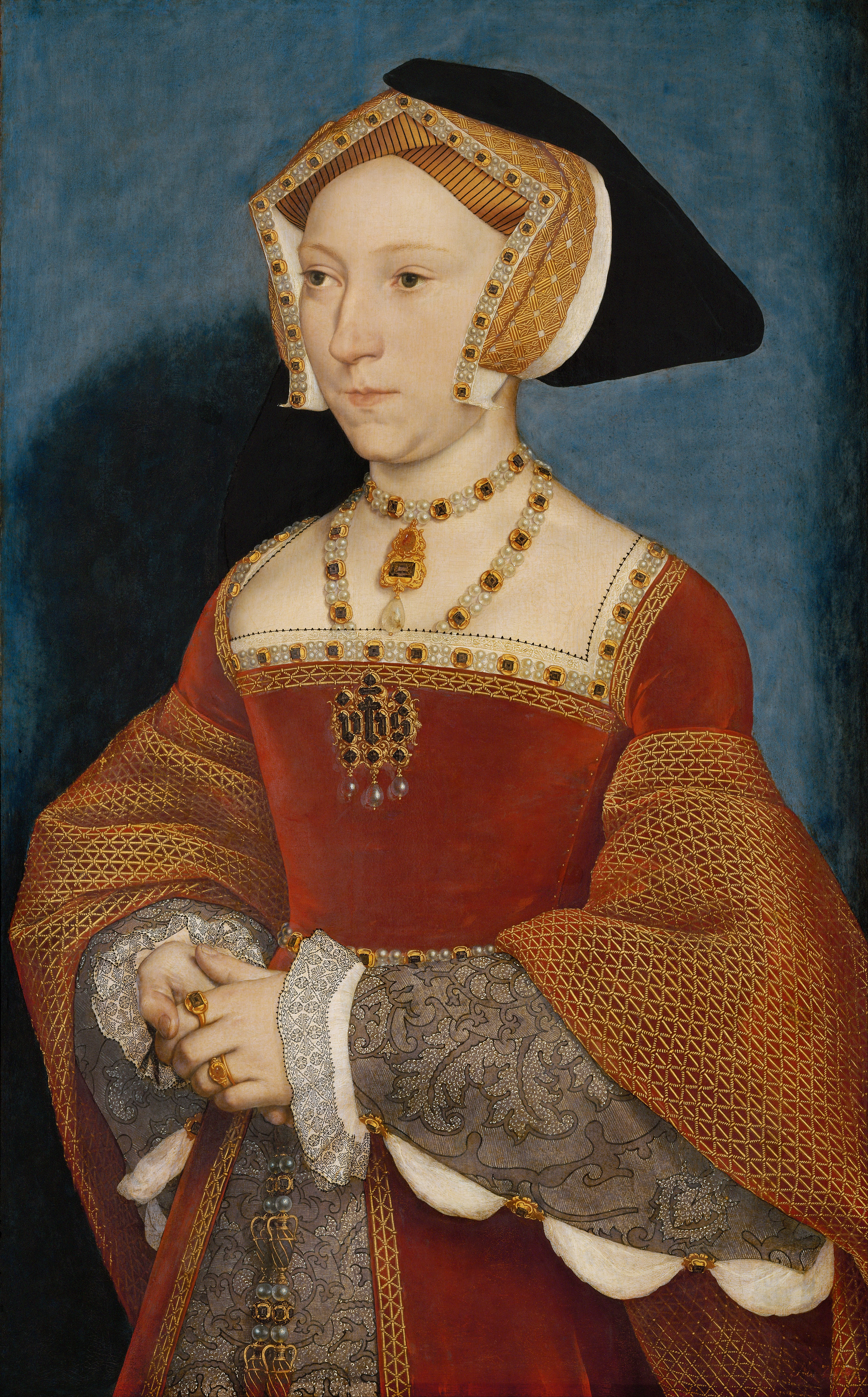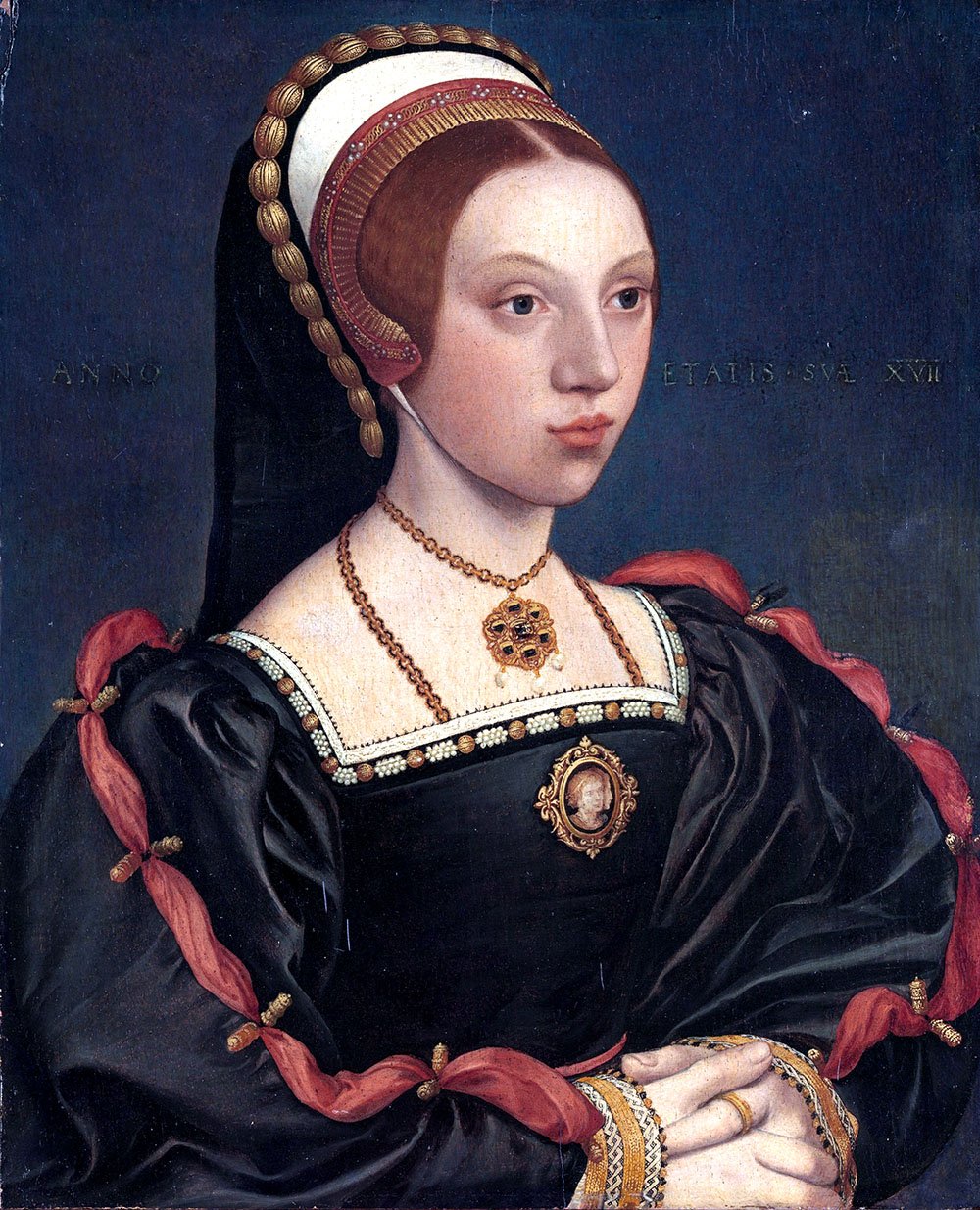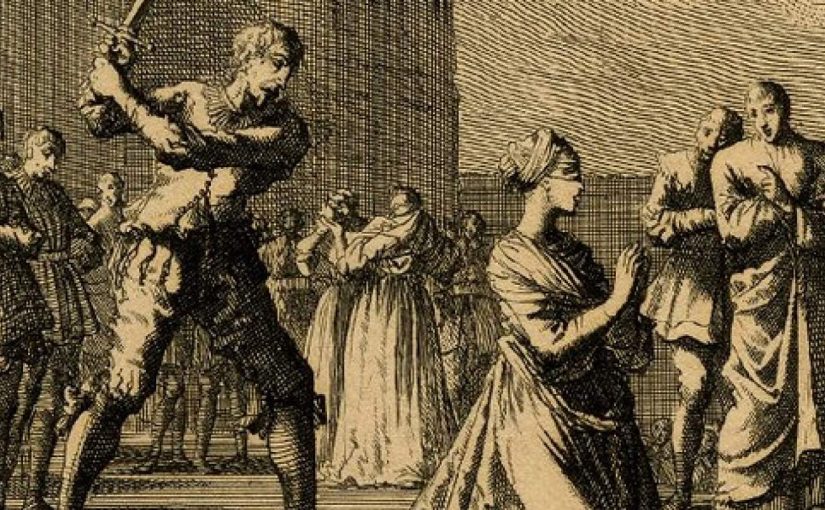Henry VIII was the 2nd king of the Tudor period, started by his father in 1485. He is known for many things, his wars, his gluttony, and his tyrannical rule, but he is most well known for the sheer multitude of wives he had throughout his reign. Here is the story of Henry’s Famous 6 Wives.
Catherine of Aragon (married 1509-1533)

Catherine was the widow of his dead brother, Arthur, who was originally intended to be the King instead of Henry. Henry VII had arranged for Arthur and Catherine to marry since Arthur was 3, in order to form an alliance with Spain. By the time Arthur died, Henry was 11 and Catherine was 17. The Bible says that marrying your brother’s widow is not allowed:
If a man marries his brother’s wife, it is an act of impurity; he has dishonoured his brother. They will be childless.
Leviticus 20:21
Therefore, Henry VII had to strike a deal with the Pope, in order for the marriage to go ahead. Henry VIII became king and was married to Catherine of Aragon in 1509, at the age of 18. Historians have described their marriage as “unusually good”. However things took a turn for the worse.
The Pope had gone to war with France and needed some assistance. Wanting to go down as one of the great kings who conquered France, Henry attacked. Meanwhile, Catherine was pregnant and lead a great victory against the Scottish. Unfortunately, the wars lost funding and once he returned home, he found out Catherine had given birth to a girl, Mary. This was the 5th pregnancy for her, the other 4 having all died in infancy or come out stillborn, and it was a girl. Henry needed a male heir. In addition, he and the King of Spain, Charles V, had made a deal to invade France together and Henry would take the throne, with Charles being arranged to marry Mary, despite the two of them being cousins and he was 22.
After 2 English invasions without Spanish support, Henry decided to not go on a third invasion. However, this time, the Spanish managed to capture the French King at Pavia. When Henry asked about their deal that he would get the throne, Charles turned his back on the deal, did not hand over the throne and backed out of the marriage.
Henry considered his wife to only have two purposes, keeping an alliance with Spain and giving him a male heir, both of which she could not do. It was around this time that Henry began to put on weight and his eyes drifted to one of Catherine’s ladies in waiting, Anne Boleyn.
Anne Boleyn (married 1533-1536)

Boleyn was a stunning, smart and cultured young woman, just the ticket Henry was after. Whilst Henry had many mistresses, including Anne’s sister, Anne did not want to be just a mistress to Henry and wanted to be Queen. He’d send love letters to her, but she’d keep him at a distance, meaning he’d always want more.
He turned to Cardinal Wolsey, one of the King’s top advisors, requesting that he wanted a divorce from Catherine and wanted it done quietly. However, Wolsey went to Pope Clement VII instead of just doing it himself. And since Charles was heir to the Holy Roman Empire so had a close diplomatic relationship with Clement, everyone in Europe soon found out. However, the divorce trial went ahead. The outcome Henry wanted was predicated on the Bible verse mentioned above, especially the childless part, citing the fact he did not have a male heir as proof, arguing that the old Pope had made an error in allowing him to marry his brother’s widow and that divorce was the only solution. However, an anonymous source sent the love letters that Anne had received to Clement, leading him to believe that the reason he wanted a divorce was so he could get with Anne. Clement eventually sent a cardinal over to oversee the trial, who would consistently deny any request that Henry made, citing his gout as reasons he could not go through with it. Anne began to suspect that Clement was just delaying the inevitable, and after 2 long years of trial, he denied Henry’s divorce.
Furious at this betrayal, considering all the physical defences against France and the ideological ones against Martin Luthers Protestantism, he dismissed Wolsey and sentenced him to death, who died a year later from an illness, and began making efforts to remove Papal Influence from English life. He, along with a group of scholars and theologians, claimed that the Pope was taking over the English Church by his rule. Many supported him, and those that didn’t were executed. Henry declared himself Supreme Head of the English Church, and one of his first acts was to divorce his wife and marry Anne Boleyn.
Due to his current wife’s Protestant beliefs, they began taking all the valuable assets and money from Catholic churches, on the grounds of fraud, by selling fake fragments of the cross and selling vials of “Jesus’ blood” which they allegedly got from ducks. Whether these accusations were true or not is still up to debate. Catholics who were unhappy about the dissolving of the monasteries were executed.

He funnelled the money into hobbies, like partying, banquets (in which they’d eat 5000 calories a day), playing music and jousting. On one such jousting occasion, Henry got into a horrible accident at Greenwich Palace. He was thrown fully armoured from his horse, also fully armoured, and the horse then fell on top of him. He was unconscious for two hours. Historians believe that this incident accelerated his fall into tyranny. Anywhere between 57,000 to 72,000 people were executed during his reign, the most famous of which was his one wife, Anne Boleyn.
Just like Catherine, Anne had been pregnant 4 times, having been able to bare only one daughter, Elizabeth. Rumours also circulated that Anne had been going around, insulting his manhood. Henry called upon his new advisor, Thomas Cromwell, to deal with Anne. Cromwell, not wanting to end up like Wolsey, he found a musician, who had been openly flirtatious with Anne, and forced a confession that Anne was committing adultery with him. Anne ended up being charged, as well as incest, conspiracy to kill the King and perversion. The jury found her guilty, a jury that included her uncle and ex-fiancee, and she was sentenced to death, being executed on May 19th 1536.
Jane Seymour (married 1536-1537)

The next day, Henry married one of Anne’s ladies in waiting, Jane Seymour. She was soon pregnant and, the devout Catholic she was, requested that he reestablish the monasteries. Henry bluntly told her to remember what happened to Anne, as he was tired of his previous wife meddling with his business. By October 1537, Seymour had given birth to Edward, Henry’s first and only male heir. Unfortunately, Jane died only 12 days later due to complications with the birth. Henry mourned her loss for 2 whole years. Cromwell had eventually lined up for Henry to marry Anne of Cleves.
Anne of Cleves (married January to July of 1540)

Anne was the sister of a German Duke, but Henry went off appearances alone, despite having gained a lot of weight and not being able to exercise it off due to a leg injury he obtained in the accident and Greenwich Palace. The painting shown above is the one he was shown by Cromwell, who assured him that she was beautiful. However, upon arriving in England, she did not meet Henry’s standards saying that she resembled a Flanders Mare, a breed of horse. He in fact found his wife so incredibly unattractive that he had Cromwell executed for recommending her to him, and he never wanted to consummate the marriage. Mind you, by this time, Henry weighed around 300lb or 136kg and was oozing puss from his leg due to the accident. Only 6 months later he divorced her.
Catherine Howard (married 1540-1541)

Whilst Cromwell was being executed, Henry married Catherine Howard at the age of 49, whilst she was only 17. Naturally, being married to an almost 50-year-old obese man who leaked puss was not the most desirable choice for a young attractive woman so she allegedly began having extra-marital affairs. She was swiftly executed in 1541 for her “treasonous” behaviour
Catherine Parr (married 1543-1547)

Henry eventually married Catherine Parr, his sixth and final wife. She apparently cared for Henry very well, helped convince him to restore his two daughters to the line of succession, after Edward, and was somewhat of a family mediator. They disagreed on their theology a lot but other than that small hiccup the marriage was somewhat successful, until Henry’s gluttony finally caught up to him in 1547 and he passed away at the age of 55. Parr passed away only 1 year later at 36, due to issues with the birth of her only daughter, Mary Seymour.
